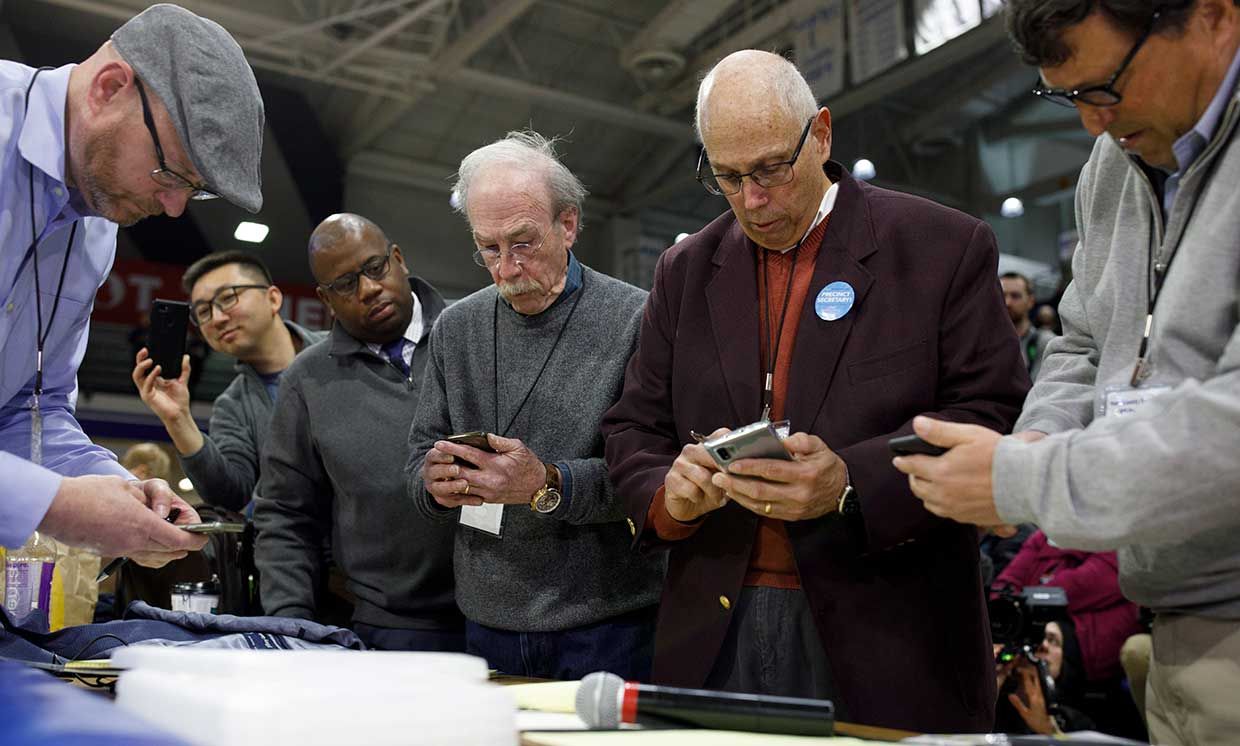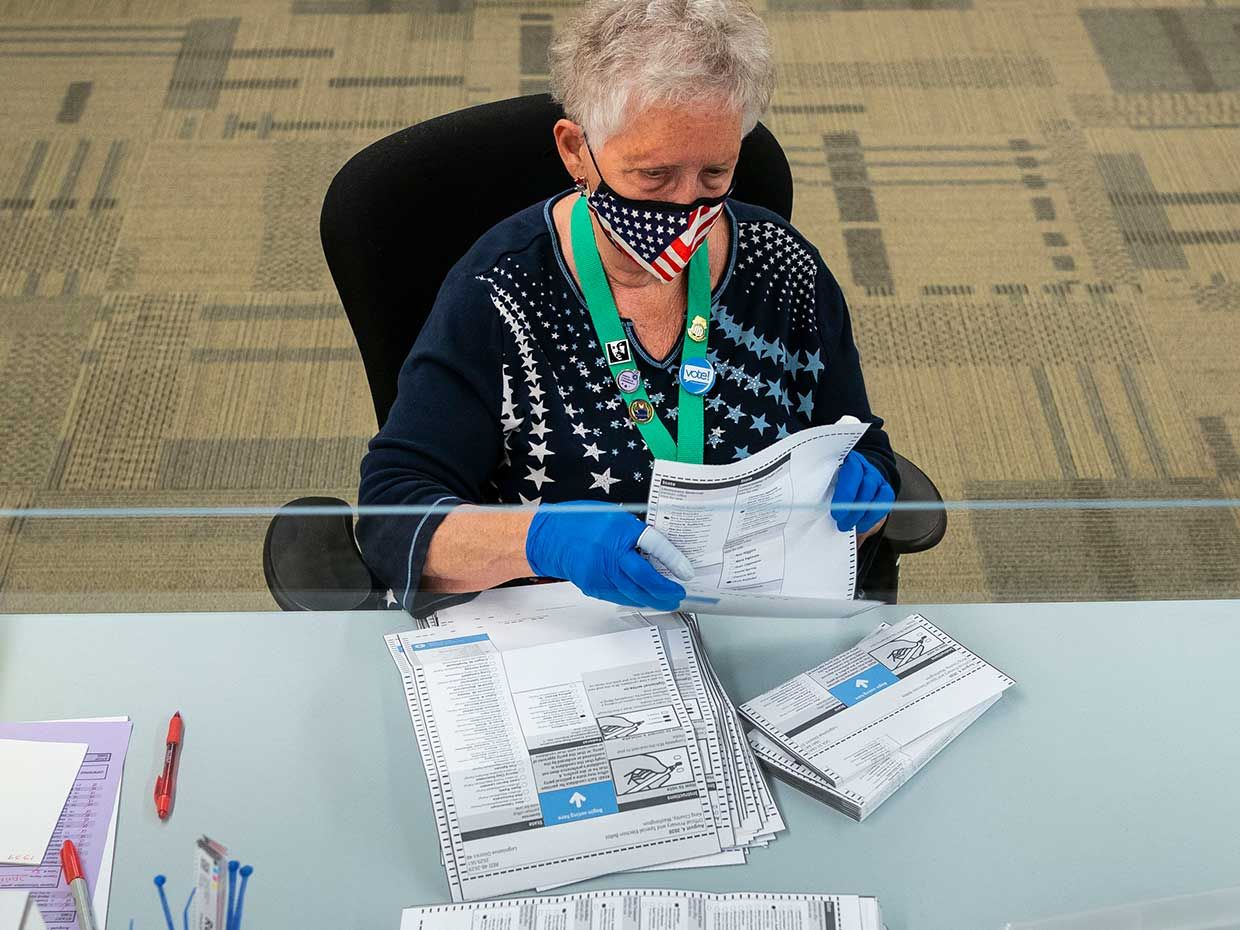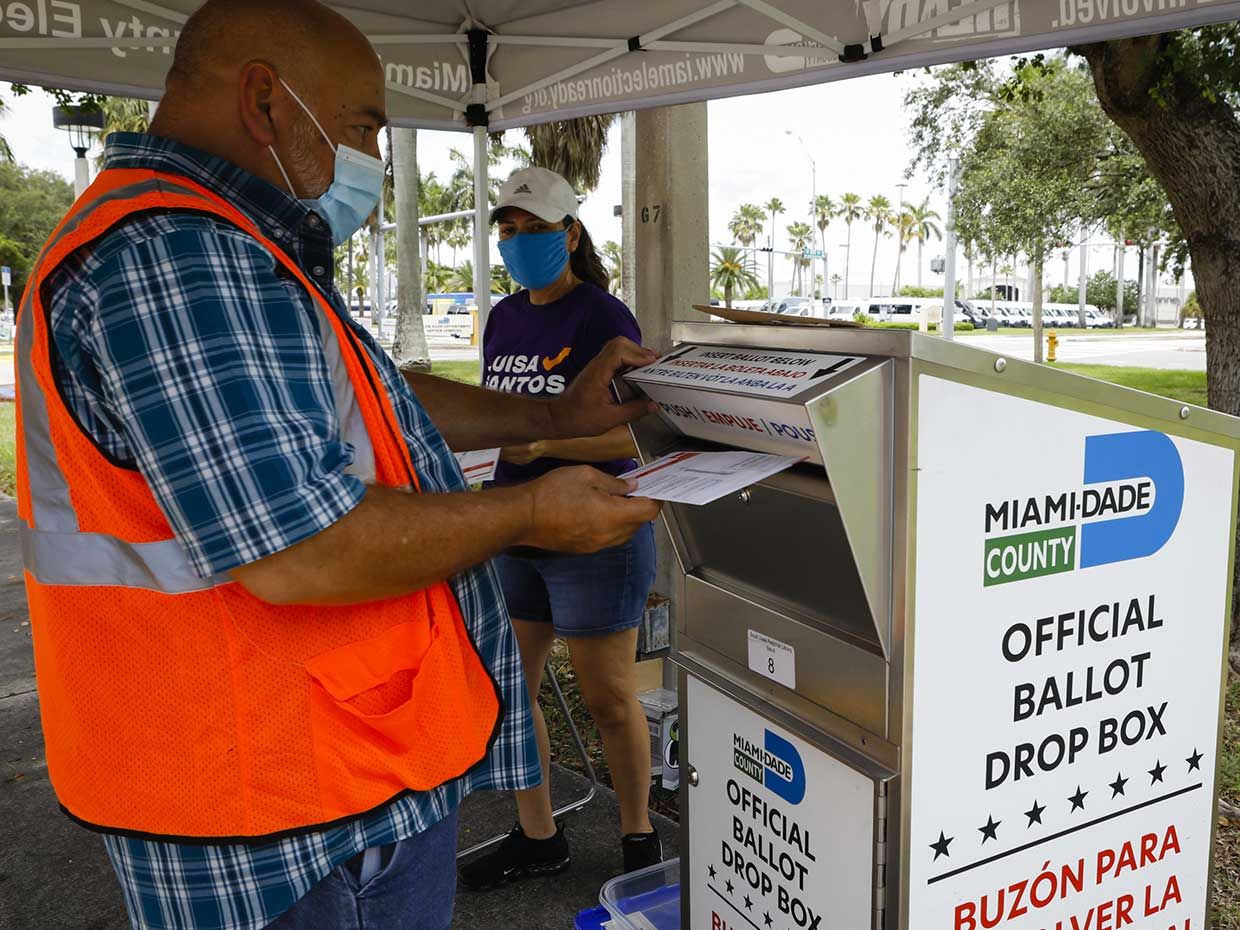How the U.S. Can Apply Basic Engineering Principles To Avoid an Election Catastrophe
This is a guest post. The views expressed here are solely those of the author and do not represent positions of IEEE Spectrum or the IEEE.
The 2020 primary elections and caucuses in the United States earlier this year provide a textbook case of how technology and institutions can fail in a crisis, when we need them most. To recap: Americans looked on, many of them with incredulity, as people hoping to vote were forced to wait hours at the height of the initial wave of the COVID-19 pandemic. Elsewhere, there were delayed elections, tens of thousands of undelivered or uncounted mail-in ballots, and long delays in counting and releasing results. This in what is arguably the world's most technologically advanced industrialized nation.
Given the persistence of COVID in the United States and domestic and foreign efforts to delegitimize its November presidential election, a repeat of the primaries could easily produce a massive visible disaster that will haunt the United States for decades. Indeed, doomsday scenarios and war-gaming what ifs" have become almost a cottage industry. Fortunately, those earlier failures in the primaries provide a road map to a fair, secure, and accessible election-if U.S. officials are willing to learn and act quickly.
What happens in the 2020 U.S. election will reverberate all over the world, and not just for the usual reasons. Every democracy will face the challenge of organizing and ensuring safe and secure elections. People in most countries still vote in person by paper ballot, but like the United States, many countries are aggressively expanding options for how their citizens can vote.
Compared with the rest of the world, though, the United States stands apart in one fundamental aspect: No single federal law governs elections. The 50 states and the District of Columbia each conduct their own elections under their own laws and regulations. The elections themselves are actually administered by 3,143 counties and equivalents within those states, which differ in resources, training, ballots, and interpretation of regulations. In Montana, for example, counties can automatically mail ballots to registered voters but are not required to.
A similar diversity applies to the actual voting technology. In 2016, half of registered voters in the United States lived in areas that only optically scan paper ballots; a quarter lived in areas with direct-recording electronic (DRE) equipment, which only creates an electronic vote; and the remainder lived in areas that use both types of systems or where residents vote entirely by mail, using paper ballots that are optically scanned. Over 1,800 small counties still collectively counted a million paper ballots by hand.
The failures during the primaries grew from a familiar litany: poor organization, untried technology, inadequate public information, and an inability to scale quickly. Counties that had the worst problems were usually ones that had introduced new voting software and hardware without adequately testing it, or without training operators and properly educating users.
There were some early warnings of trouble ahead. In February, with COVID not yet an issue in the United States, the Iowa Democratic caucus was thrown into chaos when the inadequately vetted IowaReporter smartphone app by Shadow, which was used to tabulate votes, broke down. The failure was compounded by malicious jamming of party telephone lines by American trolls. It took weeks to report final results. Georgia introduced new DRE equipment with inadequate training and in some cases, the wrong proportion of voting equipment to processing equipment, which delayed tabulation of the results.
 Photo: Tom Brenner/Getty Images On 3 February, a smartphone app created to tabulate the results of the Iowa Democratic caucuses broke down, a key link in a chain of events that ended with the contest in chaos. Here, election officials from the 68th caucus precinct attempted to access results on their smartphones at Drake University in Des Moines.
Photo: Tom Brenner/Getty Images On 3 February, a smartphone app created to tabulate the results of the Iowa Democratic caucuses broke down, a key link in a chain of events that ended with the contest in chaos. Here, election officials from the 68th caucus precinct attempted to access results on their smartphones at Drake University in Des Moines. As fear of COVID spread, many states scaled up their absentee-voting options and reduced the number of polling places. In practice, absentee voting" refers to the use of a paper ballot that is mailed to a voter, who fills it out and then returns it. A few states like Kentucky, with good coordination between elected leaders and election administrators, executed smooth mail-in primaries earlier this year. More common, however, were failures of the U.S. Post Office and many state- and local-election offices to handle a surge of ballots. In New York, some races remained undecided three weeks after its primary because of slow receipt and counting of ballots. Election officials in 23 states rejected over 534,000 primary mail-in ballots, compared with 319,000 mail-in ballots for the 2016 general election.
The post office, along with procrastinating voters, has emerged as a critical failure node for absentee voting. Virginia rejected an astonishing 6 percent of ballots for lateness, compared with half of a percent for Michigan. Incidentally, these cases of citizens losing their vote due to known difficulties with absentee ballots far, far outweigh the incidences of voter fraud connected to absentee voting, contrary to the claims of certain politicians.
At this point, a technologically savvy person could be forgiven for wondering, why can't we vote over the Internet? The Internet has been in widespread public use in developed countries for more than a quarter century. It's been more than 40 years since the introduction of the personal computer, and about 20 since the first smartphones came out. And yet we still have no easy way to use these nearly ubiquitous tools to vote.
A subset of technologists has long dreamed of Internet voting, via an app. But in most of the world, it remains just that: a dream. The main exception is Estonia, where Internet voting experiments began 20 years ago. The practice is now mainstream there-in the country's 2019 parliamentary elections, nearly 44 percent of voters voted over the Internet without any problems. In the United States, over the past few years, some 55 elections have used app-based Internet voting as an option for absentee voting. However, that's a very tiny percentage of the thousands of elections conducted by municipalities during that period. Despite Estonia's favorable experiences with what it calls i-voting," in much of the rest of the world concerns about security, privacy, and transparency have kept voting over the Internet in the realm of science fiction.
The rise of blockchain, a software-based system for guaranteeing the validity of a chain of transactions, sparked new hopes for Internet voting. West Virginia experimented with blockchain absentee voting in 2018, but election technology experts worried about possible vulnerabilities in recording, counting, and storing an auditable vote without violating the voter's privacy. The lack of transparency by the system provider, Voatz, did not dispel these worries. After a report from MIT's Internet Policy Research Initiative reinforced those concerns, West Virginia canceled plans to use blockchain voting in this year's primary.
We can argue all we want about the promise and perils of Internet voting, but it won't change the fact that this option won't be available for this November's general election in the United States. So officials will have to stick with tried-and-true absentee-voting techniques, improving them to avoid the fiascoes of the recent past. Fortunately, this shouldn't be hard. Think of shoring up this election as an exercise involving flow management, human-factors engineering, and minimizing risk in a hostile (political) environment-one with a low signal-to-noise ratio.
 Photo: David Ryder/Getty Images Jan Reese, an election worker in Renton, Washington, opened mail-in ballots in the state's primary elections on 4 August, 2020.
Photo: David Ryder/Getty Images Jan Reese, an election worker in Renton, Washington, opened mail-in ballots in the state's primary elections on 4 August, 2020. This coming November 3 will see a record voter turnout in the United States, an unprecedented proportion of which will be voting early and by mail, all during an ongoing pandemic in an intensely partisan political landscape with domestic and foreign actors trying to disrupt or discredit the election. To cope with such numbers, we'll need to flatten the curve." A smoothly flowing election will require encouraging as many people as possible to vote in the days and weeks before Election Day and changing election procedures and rules to accommodate those early votes.
That tactic will of course create a new challenge: handling the tens of millions of people voting by mail in a major acceleration of the U.S. trend of voting before Election Day. Historically, U.S. voters could cast an absentee ballot by mail only if they were out of state or had another state-approved excuse. But in 2000, Oregon pioneered the practice of voting by mail exclusively. There is no longer any in-person voting in Oregon-and, it is worth noting, Oregon never experienced any increases in fraud as it transitioned to voting by mail.
Overall, mail-in voting in U.S. presidential elections doubled from 12 percent (14 million) of all votes in 2004 to 24 percent (33 million) votes cast in 2016. Those numbers, however, hide great diversity: Ninety-seven percent of voters in the state of Washington but only 2 percent of West Virginians voted by mail in 2016. Early voting-in person at a polling station open before Election Day-also expanded from 8 percent to 17 percent of all votes during that same 12-year period, 2004 to 2016.
Today, absentee voting and vote-by-mail are essentially equivalent as more states relax restrictions on mail-in voting. In 2020, five more states-Washington, Colorado, Utah, Hawaii, and California-will join Oregon to vote by mail exclusively. A COVID-induced relaxation of absentee-ballot rules means that over 190 million Americans, not quite two-thirds of the total population, will have a straightforward vote-by-mail option this fall.
Whether they will be able to do so confidently and successfully is another question. The main concern with voting by mail is rejected ballots. The overall rejection rate for ballots at traditional, in-person voting places in the United States is 0.01 percent. Compare that with a 1 percent rejection rate for mail-in ballots in Florida in 2018 and a deeply dismaying 6 percent rate for Virginia in its 2020 primary.
Nearly all of the Virginia ballots were rejected because they arrived late, reflecting the lack of experience for many voting by mail for the first time. Forgetting to sign a ballot was another common reason for rejection. But votes were also refused because of regulations that some might deem overly strict-a tear in an envelope is enough to get a mail-in vote nixed in some districts. These verification procedures are less forgiving of errors, and first-time voters, especially ethnic and racial minorities, have their ballots rejected more frequently. Post office delivery failures also contributed.
We already know how to deal with all this and thereby minimize ballot rejection. States could automatically send ballots to registered voters weeks before the actual election date. Voters could fill out their ballot, seal it in an envelope, and place that envelope inside a larger envelope, which they would sign. A bar code on that outside envelope would allow the voter and election administrators to track its location. It is vitally important for voters to have feedback that confirms their vote has been received and counted.
 Photo: Eva Marie Uzcategui/Bloomberg/Getty Images An election official in Miami inserted a ballot into a drop box during Florida's primaries on 18 August. During those primaries, 2.2 million Floridians voted remotely, a record for the state.
Photo: Eva Marie Uzcategui/Bloomberg/Getty Images An election official in Miami inserted a ballot into a drop box during Florida's primaries on 18 August. During those primaries, 2.2 million Floridians voted remotely, a record for the state. This ballot could be mailed, deposited in a secure dropbox, or returned in person to the local election office for processing. In 2016, more than half the voters in vote-by-mail states returned their ballots, not by mail but by secure drop-off boxes or by visiting their local election offices.
The signature on the outer envelope would be verified against a signature on file, either from a driver's license or on a voting app, to guard against fraud. If the signature appeared odd or if some other problem threatened the ballot's rejection, the election office would contact the voter by text, email, or phone to sort out the problem. The voter could text a new signature, for example. Once verified, the ballots could be promptly counted, either before or on Election Day.
The problem with these best practices is that they are not universal. A few states, including Arizona, already employ such procedures and enjoy very low rates of rejected mail-in ballots: Maricopa County, Ariz. had a mail-in ballot rejection rate of just 0.03 percent in 2018, roughly on a par with in-person voting. Most states, however, lack these procedures and infrastructure: Only 13 percent of mail-in ballots this primary season had bar codes.
The ballots themselves could stand some better human-factors engineering. Too often, it is too challenging to correctly fill out a ballot or even an application for a ballot. In 2000, a poorly designed ballot in Florida's Palm Beach County may have deprived Al Gore of Florida's 29 electoral votes, and therefore the presidency. And in Travis County, Texas, a complex, poorly designed application to vote by mail was incorrectly filled out by more than 4,500 voters earlier this year. Their applications rejected, they had to choose on Election Day between not voting or going to the poll and risking infection. And yet help is readily available: Groups like the Center for Civic Design can provide best practices.
Training on signature verification also widely varies within and among states. Only 20 states now require that election officials give voters an opportunity to correct a disqualified mail-in ballot.
Timely processing is the final mail-in challenge. Eleven states do not start processing absentee ballots until Election Day, three start the day after, and three start the day before. In a prepandemic election, mail-in ballots made up a smaller share of all votes, so the extra time needed for processing and counting was relatively minor. Now with mail-in ballots potentially making up over half of all votes in the United States, the time needed to process and count ballots may delay results for days or weeks. In the current political climate of suspicion and hyper-partisanship, that could be disastrous-unless people are informed about it and expecting it.
The COVID-19 pandemic is strongly accelerating a trend toward absentee voting that began a couple of decades ago. Contrary to what many people were anticipating five or 10 years ago, though, most of the world is not moving toward Internet voting but rather to a more advanced version of what they're using already. That Estonia has done so well so far with i-voting offers a tantalizing glimpse of a possible future. For 99.998 percent of the world's population, though, the paper ballot will reign for the foreseeable future. Fortunately, major technological improvements envisioned over the next decade will increase the security, reliability, and speedy processing of paper ballots, whether they're cast in person or by mail.
Jonathan Coopersmith is a Professor at Texas A&M University, where he teaches the history of technology. He is the author of FAXED: The Rise and Fall of the Fax Machine (Johns Hopkins University Press, 2015). His current interests focus on the importance of froth, fraud, and fear in emerging technologies. For the last decade, he has voted early and in person.